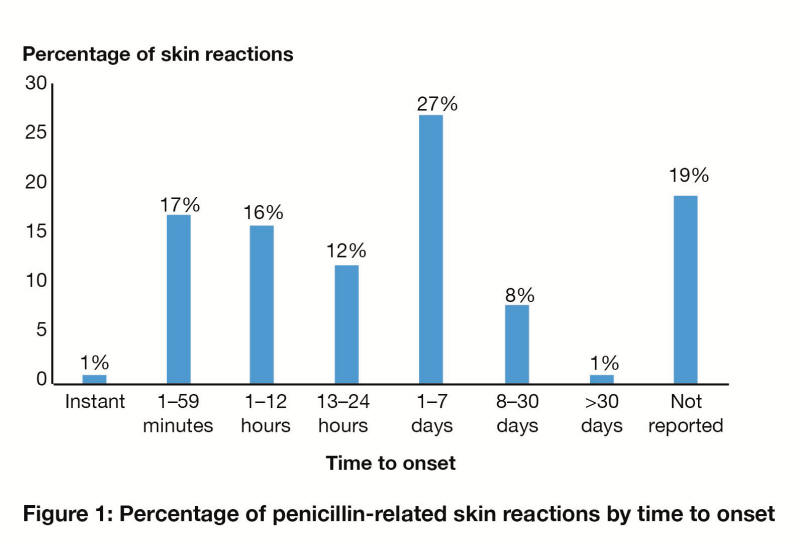Published: 3 March 2016
Publications
Delayed Skin Reactions Commonly Reported with Penicillins
Prescriber Update 37(1): 11
March 2016
Skin reactions are commonly reported in association with penicillins. Between 1 January 2010 and 31 December 2014, the Centre for Adverse Reactions Monitoring (CARM) received a total of 471 reports of skin reactions associated with penicillin treatment. Time to onset was reported in 81% of reports.
Rapidly developing (IgE-mediated) immediate type hypersensitivity often occurs within the first hour after starting penicillin-containing antibiotics. Of the 471 reports, skin reactions occurred within the first hour after penicillin administration in 18% of reports and within 24 hours of treatment initiation in 46% of reports (Figure 1). These skin reactions typically included rash, urticaria and angioedema.

Other skin reactions may take longer to manifest and may even occur after the treatment course is completed. Eight percent of all penicillin-related skin reactions were reported to have occurred between 8 and 30 days following the start of treatment.
Delayed skin reactions are often T cell-mediated and typically take days to weeks to manifest. The most serious of these are toxic epidermal necrolysis and Stevens-Johnson syndrome. More common delayed skin reactions include maculopapular and morbilliform rashes.
Should a skin reaction occur, treatment with the penicillin should be discontinued and appropriate supportive and alternative therapy instituted.
Please continue to report suspected allergic reactions to medicines, including time to onset, to CARM (https://nzphvc.otago.ac.nz/). Reporting of suspected allergies is particularly important to enable the medical warning system to be updated for the patient involved.





